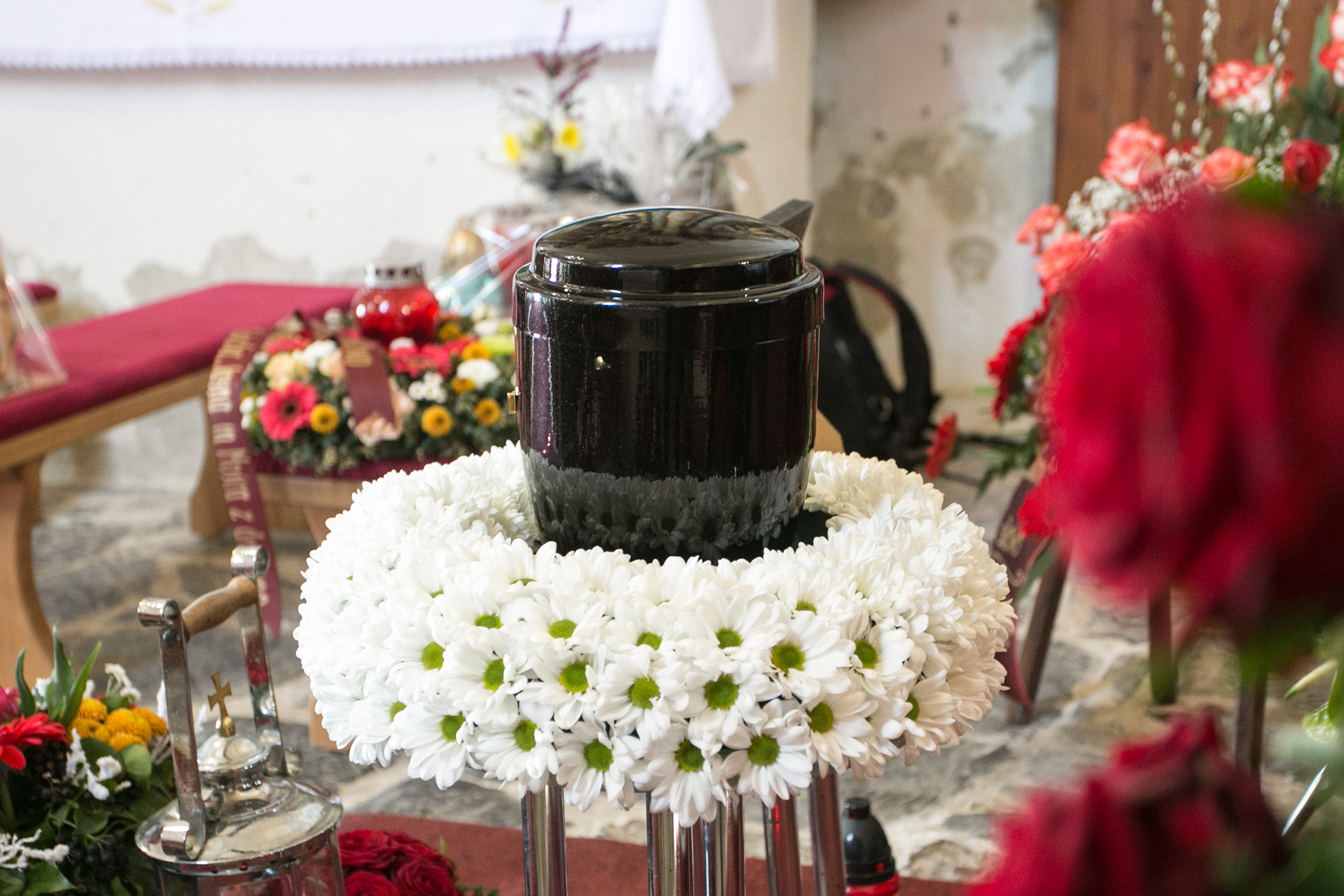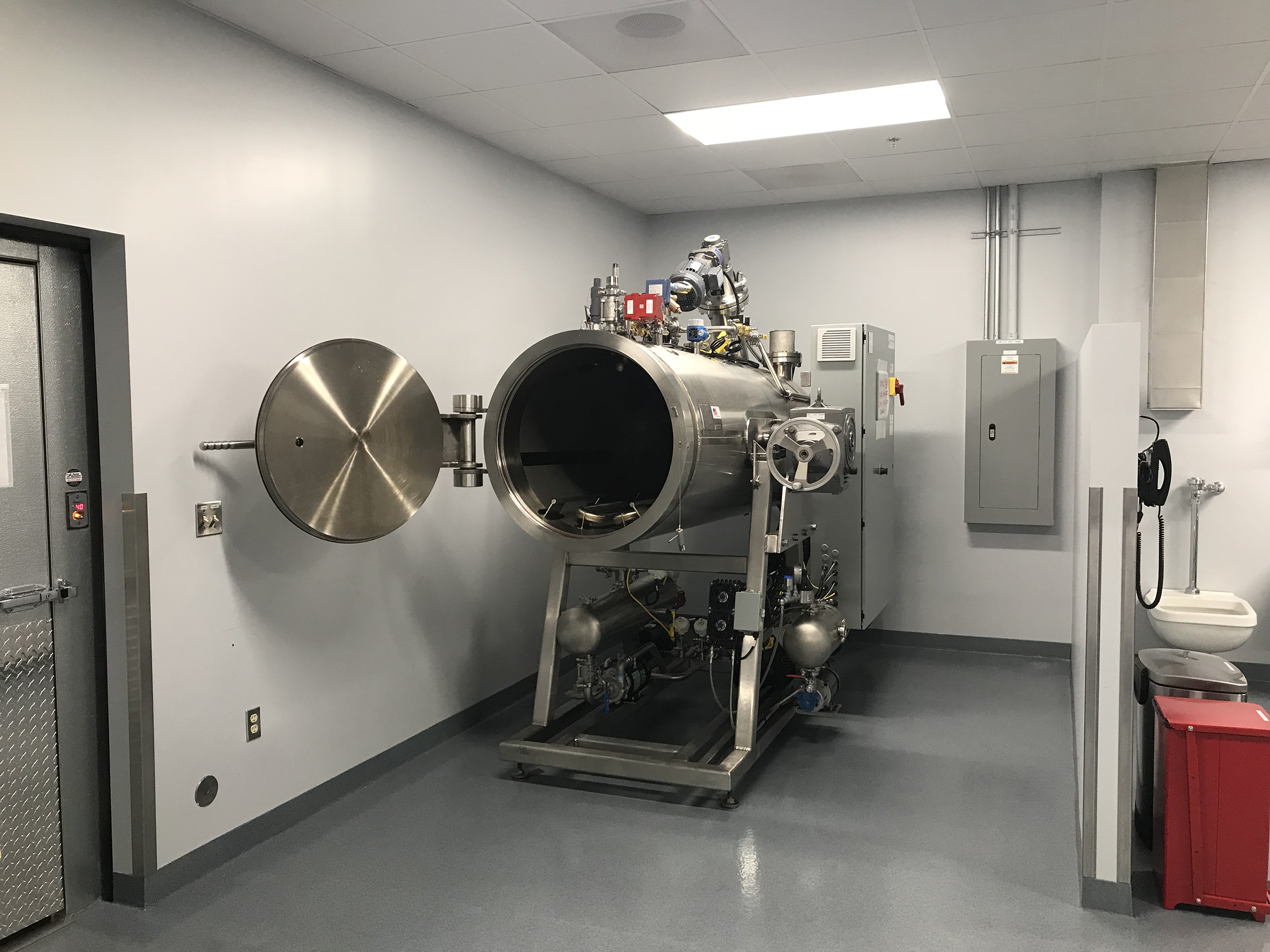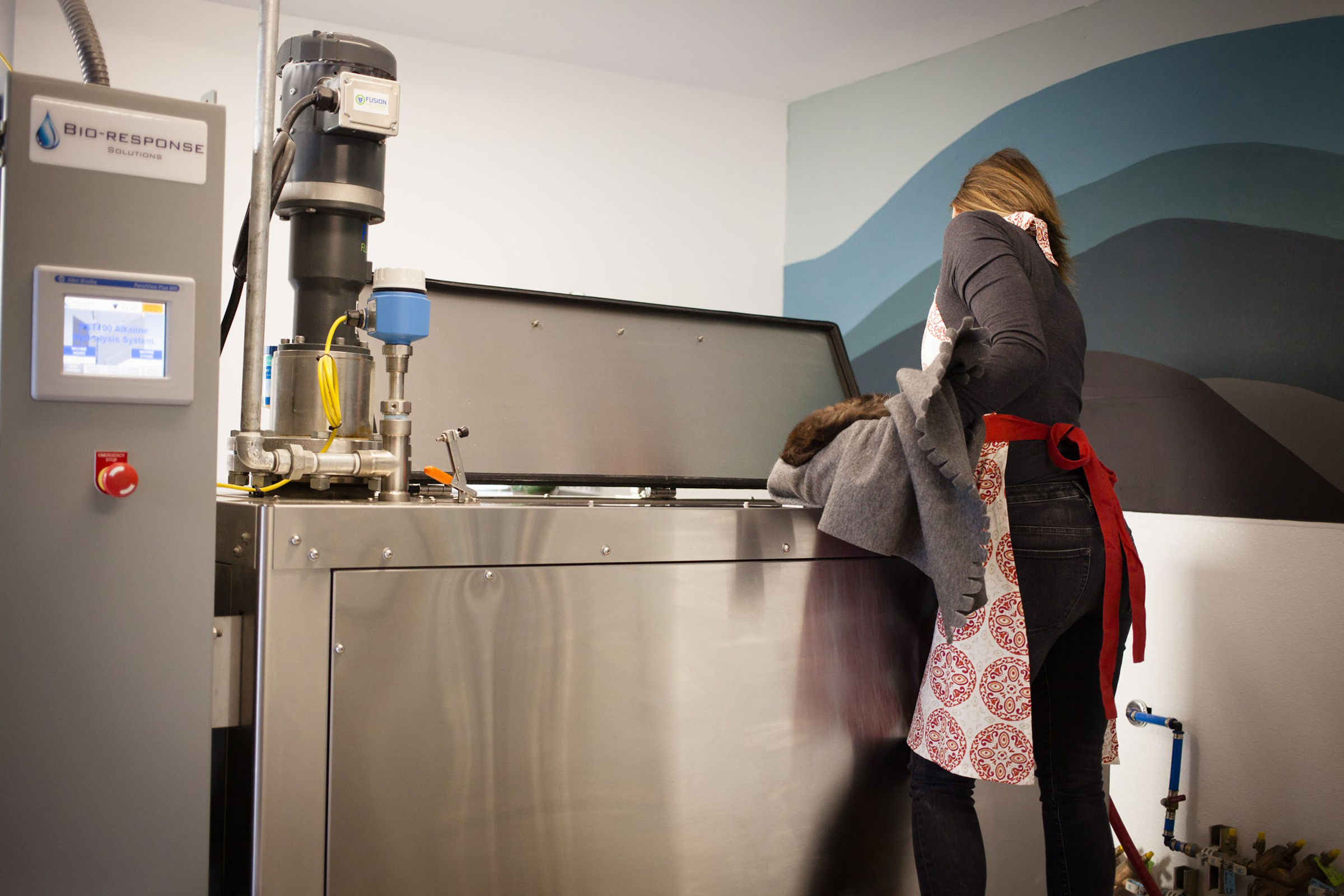
To John and Susan Garretson, the thought of cremating their son in the conventional way was almost as excruciating as the memory of his death.
On March 20, 2021, a police officer in Peachtree City, Ga., knocked on the Garretsons’ door to say their only child, 16-year-old Brighton Garretson, had been killed in a car crash. Brighton, a high school sophomore, had been a passenger in his friend’s newly purchased Corvette for less than a minute before the sports car collided with another vehicle and went up in flames. The occupants of the other vehicle survived, but Brighton and his 19-year-old friend died instantly.
The fire was so intense that it charred the tips of nearby 50-foot pine trees. When the Garretsons asked to see their son, the officer gently said it might be better to remember Brighton the way he looked when he left the house earlier that evening.

To subject their son’s body to more fire would have been unbearable, his parents say. And because they often move for work, they didn’t want to bury him in the ground and someday be far from his resting place. So they opted for a little-known and, in some quarters, controversial process known as aquamation, or alkaline hydrolysis, in which a body is soaked in a solution that dissolves practically everything but the bones.
Read more: For These Doulas, Death Is a Way of Life
“Any other option would have caused more pain,” Brighton’s father says.
It’s better for the planet, less expensive than in-ground burials, and with the death toll from COVID-19 surpassing 940,000 in the U.S. alone, the matter of funerals and funeral costs is on countless families’ minds. Yet aquamation—an option that Nobel Peace Prize-winning activist Desmond Tutu opted for before his death in December—remains rare in the U.S. and faces powerful opposition as states try, one-by-one, to make it legal.
Any other option would have caused more pain.
“We are a culture that, as much as we hate to admit it, we are sometimes quite resistant to change,” says Caitlyn Hauke, president of the Green Burial Council International, a nonprofit that advocates for environmentally sustainable death care.
In the last 15 years, aquamation has been used on hundreds of thousands of departed U.S. pets. But when it comes to deceased humans, it is far from being a popular final rite of passage. While there are now more than 3,300 licensed fire crematories nationwide—a 2.3% growth from 2019 to 2021—fewer than 40 facilities in the U.S. offer aquamation services, according to Barbara Kemmis, executive director of the Cremation Association of North America (CANA). Of the 1.8 million cremations performed in 2020, less than 0.1% were water-based, Kemmis estimates. Aquamation is allowed in about 20 states, according to CANA, yet only about 13 are equipped to carry out the procedure.
“There’s interest,” Kemmis says, “but we’re not quite at the tipping point where a lot of people are actually choosing the process.”
Why aquamation is so rarely used
Why hasn’t aquamation caught on faster? For one, an entire generation of consumers less bound to traditional funeral rituals, and more open to eco-friendly options, are mostly decades away from dying. Multiple surveys have shown that Americans under 40 are more likely to act on climate issues than older adults, and each year they’re increasingly less tied to religion. But out of roughly 3.3 million U.S. deaths in 2020, the most recent year with mortality data, death rates were highest among the elderly, especially people 85 and older, according to the U.S. Centers for Disease Control and Prevention (CDC). Eight in 10 deaths related to COVID-19 have been among adults 65 and older—a demographic more likely to opt for traditional casketed burials, according to the National Funeral Directors Association (NFDA).
Because states regulate the handling of human remains, legislatures have to amend funeral laws or create new statutes to permit aquamation. Since 2011, when aquamation was first used by U.S. funeral homes, about 20 states have allowed the process, according to CANA. At least nine states have pending legislation to permit it but face powerful opposition from the Catholic Church and cemetery groups. In Wisconsin, supporters have been trying to get aquamation approved for the last three years. In 2021, the state Senate passed a bill to permit it, against pushback from the Wisconsin Catholic Conference, which called the process an “aberration.”

During aquamation, the deceased is placed in a heated, stainless-steel chamber and submerged in a solution of 95% water and 5% alkaline chemicals commonly found in cosmetics and soaps. After several hours, everything dissolves except the bones, which are turned into powder for surviving loved ones, foreign objects such as dental cavities, and a solution that several water authorities have deemed safe to discharge into public water systems.
In written testimony in April 2021, the Wisconsin Catholic Conference said the manner of discharge was disrespectful, largely because “wastewater does not honor the sacredness of the body.” Similar arguments made by the Diocese of Manchester, the Catholic Church in New Hampshire, stymied efforts in that state in 2014. “Flushing away human remains” dishonors the dead, says Robert Dunn Jr., the diocese’s public policy director. “The issue of disrespect for human remains is something that outweighs any of the other arguments that might be made in favor of this.”
We are a culture that, as much as we hate to admit it, we are sometimes quite resistant to change.
Advocates of flameless cremation say the issue of environmental impact outweighs opponents’ arguments. Each year, burials in the U.S. use about 4.3 million gallons of embalming fluid, 20 million feet of wood, 1.6 million tons of concrete, and 64,500 tons of steel, according to the Green Burial Council International. Research on the topic has been sparse, but the group says the processing, manufacturing and transporting of those materials produce 250 lbs. of carbon emissions annually, while fire cremation produces 1.74 billion pounds of carbon dioxide emissions. Burials also come with occupational hazards. Deaths from myeloid leukemia among funeral industry workers have been linked to long-term exposure to formaldehyde from embalming. Meanwhile, aquamation uses about 90% less energy than a flame-based cremation and releases no harmful greenhouse gas emissions, green-funeral experts say. And compared with fire cremations, costs to consumers are about the same, if not less.
Read more: The Window to Adapt to Climate Change Is ‘Rapidly Closing,’ Warns the IPCC
Aquamation runs like an appliance, on electricity, and requires about 300 gallons of water per use. That’s about as much as the average American family uses at home per day, according to the U.S. Environmental Protection Agency. In Portland, Oregon, where aquamation has been allowed since 2009, the soap solution that’s left over is compatible with wastewater treatment systems, says Diane Dulken, a spokeswoman for the city’s Bureau of Environmental Services. And it’s minute—only about 100 gallons of effluent are periodically discharged, compared to the 70 million gallons or more treated daily, she says. In statements to TIME, two different wastewater and environmental agencies in Minnesota have also confirmed that the effluent is safe to discharge into wastewater if the facility follows proper protocol.

Among those who’ve been persuaded to use aquamation, many find the image of soaking in water a softer way to leave the Earth. “Sinking into this nice, warm bath, versus being lit in flames, is easier to wrap your head around,” says Hauke.
That’s true for Phillip Lane, a fire marshal in Shelby, N.C. After spending the last 16 years putting out and preventing blazes, the 39-year-old can’t imagine his body entering a burning cylinder after he’s gone. “Water is our savior in our line of work,” he says.
Yet even after a state approves aquamation, high equipment costs have kept many funeral homes from investing in the technology. Aquamation machines go for around $175,000 to upwards of $260,000, according to Samantha Sieber, vice president of research at Bio-Response Solutions, one of the leading U.S. companies that manufactures aquamation equipment. At a minimum, it costs an extra $10,000 to install the machines and potentially several hundreds of dollars more down the road for maintenance and replacement parts. That’s a risky business move for those who don’t know when they might make their money back. “If you don’t have a demonstrated market,” Kemmis says, “well then, that’s tough to finance.”

In Shelby, N.C., aquamation strengthened Eric Bester’s funeral home business after the state permitted it in 2018. After having cremated some 1,500 pets with water, Bester knew there’d be a demand among humans. So he bought two machines for humans and opened a separate aquamation-only facility five months ago. He spent $550,000 on equipment costs alone, but Bester says the investment is already paying off. If he just offered fire cremations and traditional burials, Bester says he wouldn’t stand apart from competitors. And because he doesn’t have his own flame crematory—which would require permits and be strictly regulated under state environmental and public health laws—he’d have to outsource those services and pay transportation costs. By charging $2,000 and cutting out about $350 in third-party crematory costs per person, Bester says he’s ensured that aquamation pays for itself. “It’s a no-brainer really,” he says.
How families find aquamation facilities
Still, many funeral home owners have not made the leap. That means families often have to cross state lines to find a place that offers it. Aquamation is legal in Georgia, where Brighton Garretson died in the car crash. But because his parents say they could not find a funeral home with well-established aquamation services there, they transported Brighton’s body to North Carolina. In Wisconsin, where the bill sits in the Assembly, families are paying a premium to transport their loved ones to Minnesota, where there are a handful of aquamation providers, says Jimmy Olson, a funeral home owner in Sheboygan, Wisc.

Last summer, Roy Huffstetter III paid $2,300 just to fly from Texas to North Carolina so that he could preserve the remains of his late wife, Valorie Huffstetter, through aquamation. Valorie, a Houston first responder, suffered a pulmonary embolism and died on Aug. 8, 2021 at age 36. She was a nature lover who often stopped to photograph trees and flowers. After learning about aquamation three years ago through a mortician’s YouTube video, Valorie decided that, when she died, it was how she wanted her body handled, mainly for its environmental benefits and the calm it elicited, her husband says.
The aquamation bill came to $1,500, which Roy says was shockingly low compared to the $3,500 he paid for a traditional cremation and service for his mother in December 2020. In 2021, the median national price for a casketed burial with services and a vault was $9,420, according to the NFDA. For a flame-based cremation, even one pared down without a casket or urn, the median national price was still $5,365. In total, Roy, 40, says he paid less than he would have if he had opted for a flame-base cremation for his wife locally.
He now plans to scatter Valorie’s remains on a volcano in Maui and along the Galveston, Texas, coastline—their favorite place to be together.
Read more: Funeral Costs Are Driving Families Hit by COVID-19 to Desperate Measures
Funeral industry experts predict aquamation will steadily rise in popularity in the U.S., similar to how fire cremation did, despite a slow start. The first flame-based cremation took place in 1876. It took nearly 100 years before the national cremation rate reached 5% in 1972, and another four decades after that for cremation to overtake traditional burial rates. Today, more than 56% of the dead in the U.S. are cremated—a 1.5% jump from 2019—as a more transient population of U.S. consumers considers costs and environmental concerns over tradition, according to the NFDA.
Hauke says that as the pandemic’s death toll leads more people to consider their own, and their loved ones’ mortality, more Americans will become familiar with aquamation. Since it was founded in 2006, Bio-Response Solutions has provided 35 machines to U.S. funeral homes and many more globally, including the one Desmond Tutu used in South Africa, Sieber says. The company sold six machines in California and Florida in just one recent week.
National surveys indicate some promise, too. Out of 880 consumers aged 40 and older surveyed last spring by the NFDA, nearly 56% said they’d be interested in exploring green funeral options. “I don’t think it’s gonna take 100 years for alkaline hydrolysis to become popular,” Kemmis says.
Read more: This Class Is a Near-Death Experience, and That’s a Good Thing
Will it upend global warming, which scientists have warned could wreak havoc on civilization as early as 2030 if greenhouse gas emissions continue at the current rate? Likely not, Hauke says, but every individual effort to move the needle helps, and younger generations might be able to sway their parents and grandparents. That’s partially why DePaul University professor Craig Klugman, who teaches a death and dying course, dedicates an entire lecture to aquamation and alternate body disposal methods. Students have told him that until things change, they don’t want to bring children into the world.
“They’re probably less beholden to tradition than previous generations because of the absolute danger that we’re facing as a species and as a planet,” Klugman says.
Brighton Garretson was well-aware of these concerns.
When the family was living in Hawaii, he cleaned up beaches after school, worked with volunteers to protect local turtles, and even built a hovercraft with a friend in the fifth grade that could scoop plastic out of the ocean. His appreciation for technology and the environment made up a lot of his personality, so his parents believe he would have chosen aquamation for himself, had he been able to.
“Aquamation was the only thing that made sense,” his father says.
More Must-Reads from TIME
- Cybersecurity Experts Are Sounding the Alarm on DOGE
- Meet the 2025 Women of the Year
- The Harsh Truth About Disability Inclusion
- Why Do More Young Adults Have Cancer?
- Colman Domingo Leads With Radical Love
- How to Get Better at Doing Things Alone
- Michelle Zauner Stares Down the Darkness
Contact us at letters@time.com